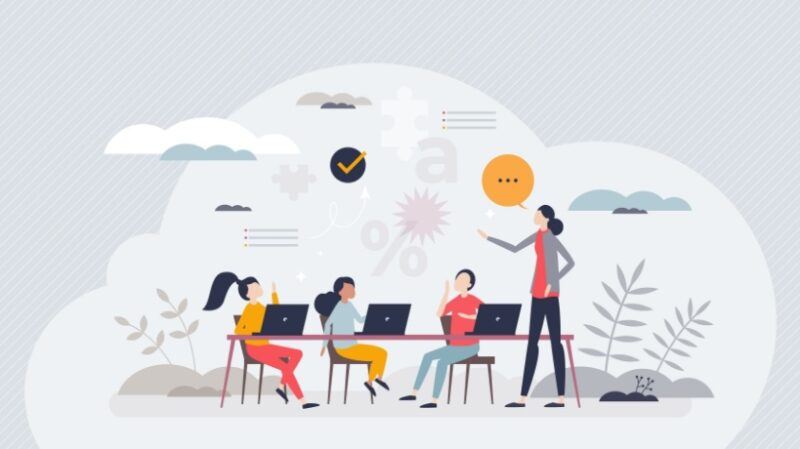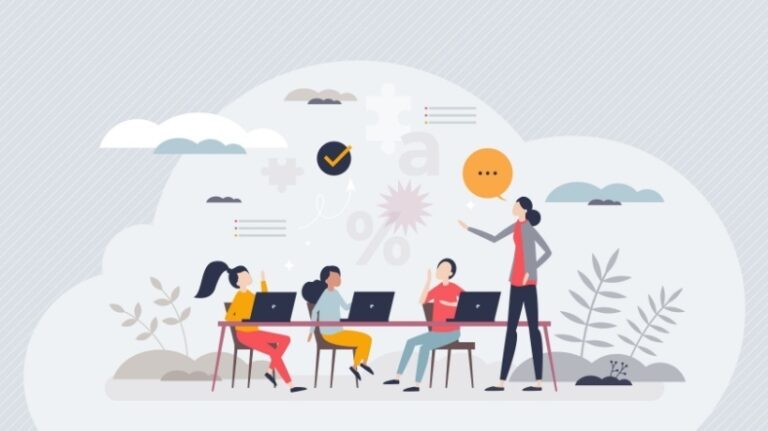
A brief introduction to adaptive learning
When you think of education, you may think of classrooms or structured corporate learning programs. Although these traditional training methods are popular, they typically fail to address the unique needs of every learner. Let’s take an example.
Imagine you purchased a leadership course. In the group, you will study as a mid-level manager, a CEO of a medium-sized company, and an experienced IT director. Regular courses are not suitable for everyone. Some people may find the content boring and others may have a hard time keeping up.
This discrepancy can reduce the overall efficiency of the course and ruin the entire experience. Personalized learning can help solve these problems.
Important points
What is a personalized learning track? What is the difference between a personal track and adaptive learning? How does adaptive learning work? What are the benefits? How can you achieve adaptive learning? Adaptive learning software?
What is personalized learning?
Everyone has their own preferred way of learning and a different learning pace. The concept of personalized learning is built on this principle. Each learner has an educational plan customized to their needs and learning preferences. But will it work?
A 2015 RAND study found that 11,000 students in 62 schools that used personalized learning techniques showed greater gains in math and reading comprehension than students in traditional schools. It turned out that. Research suggested that the more time students spend using these personalized approaches, the more progress they tend to make.
There are two main approaches to personalized learning.
Personal education tracks adaptive learning
What is the difference between Personal Track and Adaptive Course?
Personal education tracks are designed by learners or education professionals. These tracks consist of courses that focus on the subject you want to study. For example, a course might have three difficulty levels to accommodate everyone: beginner, intermediate, and expert. This way, learners can choose the track that best suits their experience and skill level.
Adaptive learning is different. This is a flexible learning approach that is adjusted based on each learner’s progress. For those who understand the content quickly and pass the test, this program increases the level of difficulty to maintain learners’ concentration and helps them achieve even better results. Similarly, for people in difficult circumstances, the program identifies their needs and adapts the learning experience to support them. Let’s take a look at the learner journey in an adaptive course.
How does adaptive learning work?
Adaptive learning is a part of interactive learning that addresses individual needs through learning pathways, effective feedback, and supplemental resources rather than a one-size-fits-all curriculum (Kurt, 2021).
But let’s keep it simple. Adaptive courses change complexity and content based on student behavior and needs. The learning platform collects and evaluates data from all students to decide what content to watch next. These types of courses include an adaptive order of content and assessment. The platform changes what students see next depending on their progress during the course.
What are the benefits?
Let’s look at the numbers first. Implementing adaptive learning in higher education can help:
Student exam pass rates increased by 18% Mathematics course dropouts decreased by 47% Economics course student exam pass rates increased by 27%
These findings reveal that adaptive learning helps maintain student interest and leads to better learning outcomes. Additionally, adaptive learning helps create flow effects. The tasks are only complex enough to keep students interested and motivated to solve them (Mihály Csíkszentmihályi). This approach is frequently used in video games to involve gamers in gameplay.
Adaptive learning is a useful teaching method, but it doesn’t solve all problems. It’s also important to consider how to keep learners motivated and ensure they use what they’ve learned. Still, this method makes it easier for students to explore important concepts and focus on what really matters.
How do I create an adaptive course?
The cost of adaptive learning has always been an issue. Creating a unique learning experience for each student is not cheap. Until recently, the only way to take an adaptive course was to hire a private instructor or study in a small group. Organizing this form of education in a school or corporate environment is impractical and resource-intensive.
Fortunately, advances in technology have made this process more affordable to implement. The main difference is that adaptive learning is now automated and can be performed online. This means 40% to 60% less time to learn new skills and millions of dollars in savings in learning implementation costs.
Next, let’s talk about creating adaptive courses. If you need to refresh your knowledge on how to take a course in general, we recommend reading this article first. The reason is that designing an adaptive course can be a little difficult. The main steps are:
1. Create a learning path
Different learning paths should be designed based on learner behavior and knowledge level. These paths show how different audiences can achieve their desired results. Therefore, you need to research your audience and create a learning map.
2. Create personalized ratings and feedback
The learning path is determined by the student’s progress in the course. Therefore, assessment is essential for adaptive learning. You should create tasks and tests that demonstrate the students’ level of knowledge and the areas they need to improve to achieve the overall course outcome.
3. Create small units of educational content
Develop short, goal-based lessons that are related to overall learning goals (Cavanagh et al., 2020, p. 178). This helps build learning patterns. All adaptive tracks include the units students need to achieve the desired results.
Let’s take a look at the pancake example.
All learners receive only relevant information. To create such an adaptive course, it’s important to understand both the learner and the course goals. This means that these courses take more time to design than traditional courses.
Create adaptive courses using adaptive learning software
Creating adaptive learning requires software and tools to collect and analyze data. Some learning management systems (LMS) can help you create and automate this process. Learn general recommendations for choosing the right LMS.
1. Decide how much money you’re willing to spend
Budgeting is an important step. Decide how much you are willing to spend on your LMS. Please note that price and quality are not necessarily correlated.
2. Study your audience
Before searching for an LMS, it’s important to describe your learner personas. Find out how they usually learn. You will need to answer some questions.
How much time can learners spend studying? Where do they usually study? Are they exercising, walking their dog, riding the bus to work? What format of educational materials do they prefer most? Is it a book, a video, or a podcast?
Don’t ask questions about the future, such as “Would you like to do that?” or “What more do you want?” Ask questions only about the present and the past. There is often a gap between what people want and what they actually use.
3. Choose your course format
Once you’ve set your budget, it’s time to consider your format. What kind of teaching are you planning? Clarify your course vision in a way that fits your budget and effectively meets your audience’s needs.
4. Identify what data you need to collect
Start by defining your goals. Each course should aim at a specific goal. For example, corporate training aims to improve business metrics such as speed of service delivery. Similarly, the school’s English courses are designed to help students achieve better grades and enhance the school’s reputation. It’s important to determine the metrics you need to monitor to assess your progress toward these goals.
5. Create a list of required features for your course
When creating engaging content such as videos, articles, or even simulators, choosing the right learning management system is important. Look for an LMS that supports adaptive learning and provides important tools to improve your experience. Features to consider include an intuitive course editor, automated analytics, personalized learning path adjustments, and a data-enabled platform. Be sure to try the demo and explore the product to make sure the LMS is right for you.
Resources: Kurt, S. 2021. Adaptive Learning: What is it, its benefits, and how does it work? Educational Technology. Cavanagh, T., B. Chen, RAM Lahcen, and J. Paradiso. 2020. Building a design framework and pedagogical approach for adaptive learning in higher education: A practitioner perspective. International Review of Research in Open and Distributed Learning 21(1): 173-197. Payne, John F., Elizabeth D. Steiner, Matthew D. Baird, and Laura S. Hamilton. Continuing progress: Promising evidence for personalized learning. Image credit: Images in the article text were created/provided by the author.
Source link


